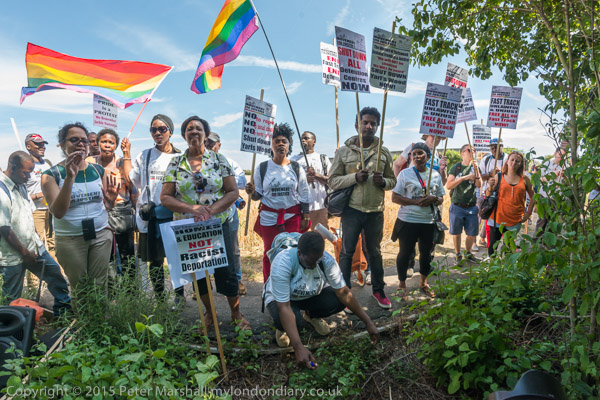
Surround Harmondsworth – End Immigration Detention – Saturday 11th July 2015
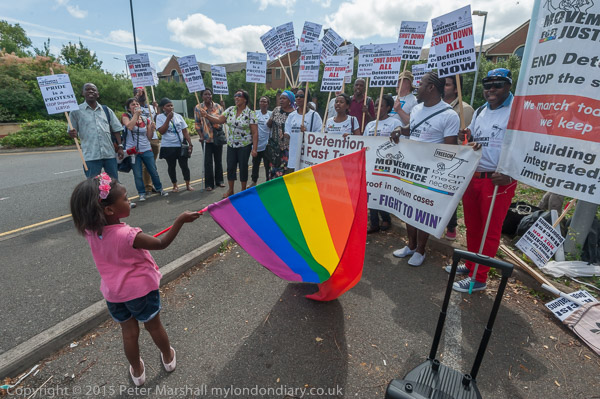
As a boy I spent much of my leisure time cycling around south-west Middlesex, either on my own or with a couple of friends exploring both the quiet lanes and busy roads such as the A4 Bath Road, then heavy with traffic, most of which now prefers the M4 a mile or so to the north here.
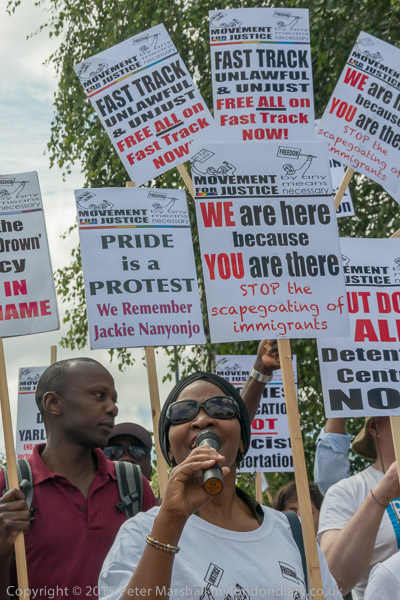
As we came to Longford we came to the Peggy Bedford, a pub at the junction where the Colnbrook Bypass, which had been opened in 1929 to take traffic away from the narrow streets of quiet villages of Longford and Colnbrook. The streets were still fairly narrow back in the 1950s (and remain so) but the quiet was then regularly replaced as planes taking off or landing at Heathrow, a stone’s throw away, thundered overhead. And what had been annoying but bearable in the age of propeller-driven aircraft soon became deafening as these were replaced by jets.
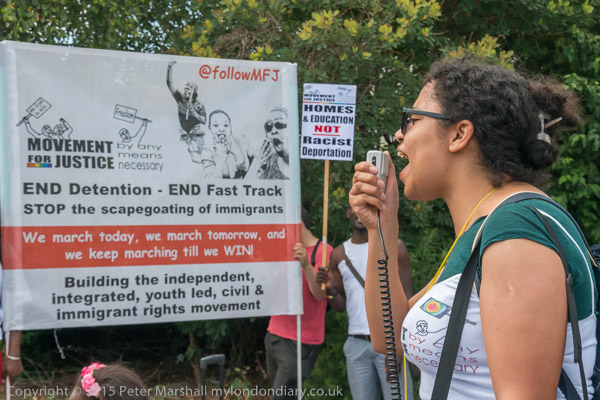
The Peggy Bedford was a typical fake-tudor building of 1930, complete with mock half-timbering and exaggerated chimneys, but the name (and licence) had a long history, dating back to a tavern around half a mile west in Longford, The Kings Head Inn. This was the first of a long string of coaching inns through Longford and Colnbrook where coaches out of London picked up their second change of horses, having made their first change in one of the hundred inns of Hounslow High Street.
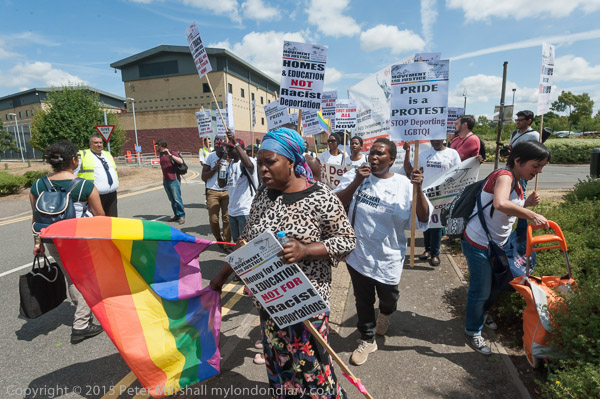
In 1782 Peggy Bedford was one of six children born to the licensee of the inn, and later she owned and ran it from 1807 until her death in 1859. All the locals came to call the pub by her name, and it became known as the Peggy Bedford, though officially still the Kings Head. When the bypass was built, the brewers realised it would bypass the pub, closed it and built a new pub at the junction and were persuaded by its patrons to officially name it so. For a while in the ’30s it was a popular roadhouse for some of London’s idle young smart set, who would drive out and race along the bypass. And when it was pulled down – to some local disgust – in 1995 the name was given to the McDonalds which replaced it.
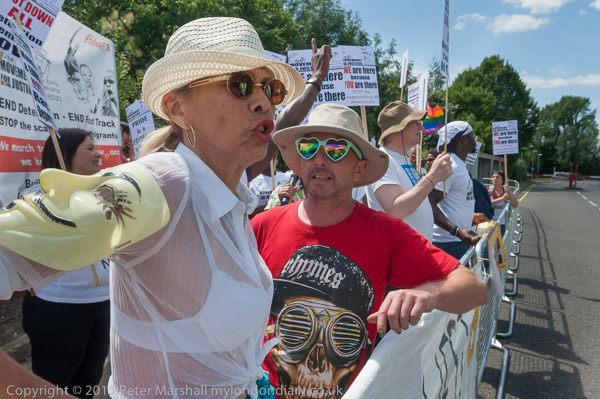
When we chose to take the bypass – a rather smoother and faster ride for us too – we soon passed on the north side of the Bath Road a government site – The Road Research Laboratory. A monument on Moor Lane at the north of this large site now records “Tests conducted by the Road Research Laboratory against model dams built on this site during 1940 – 42 assisted Barnes Wallis in his development of the bouncing bomb (Upkeep), used by No. 617 Squadron Royal Air Force to breach the Ruhr Dams 16/17 May 1943.” But the main business of the RRL was to find ways to make roads faster and safer for cars and lorries – if rather less safe for pedestrians and cyclists.
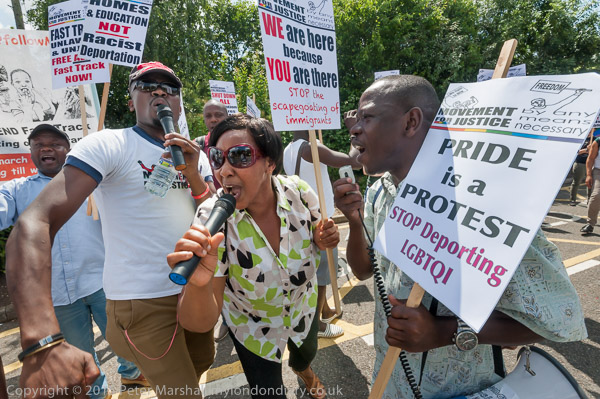
The RRL moved out to Crowthorne in the late 1960s and the part of this site closest to Bath Road is now the site of two of the UK’s heinous immigration prisons, Harmonsdsworth and Colnbrook Immigration Removal Centres (now collectively called Heathrow Immigration Removal Centre.) An area behind them is in use by BT.
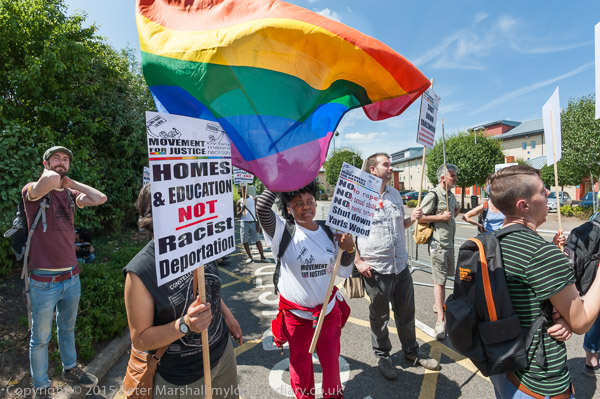
It was outside the detention centres on the Bath Road that I met with a large group of people who had come from London by underground to Heathrow terminal 5 and then a local bus to protest against the unfair treatment of asylum seekers and refugees, including some still being held under the Fast-Track system then recently found unlawful by the High Court.
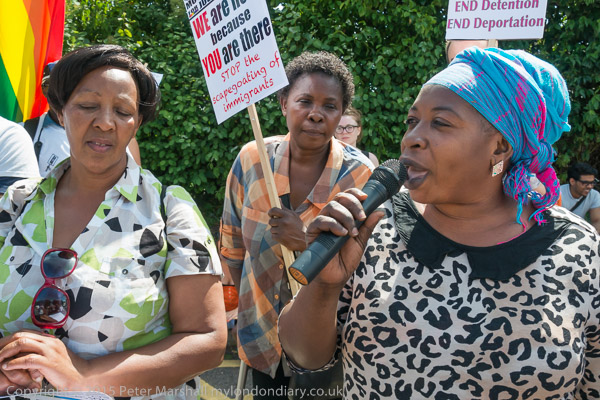
The recent change of name of these prisons from ‘detention centres’ to ‘immigration removal centres’ makes clear that the government’s intention is not to properly investigate asylum claims but to simply deport those making them as fast as they can. Although the ‘fast track’ system, designed to make it impossible for people to properly fight their case to stay has now been declared illegal, those held in the centre are still under threat of being bundled onto a plane without a proper chance to present their case.
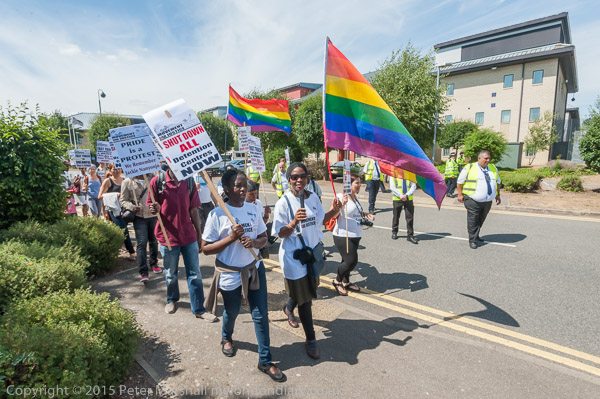
This protest at Europe’s largest detention centre complex was the eighth organised there by the Movement for Justice, who have also organised protests at other immigration prisons including Yarls Wood. MfJ have also worked with many detainees whilst they are inside the centres, providing assistance and preventing many cases of premature deportation. Thanks largely to the efforts of them and other bodies which also work with detainees many have eventually been released and allowed to remain in the UK, and most of those taking part in the protest were former detainees.
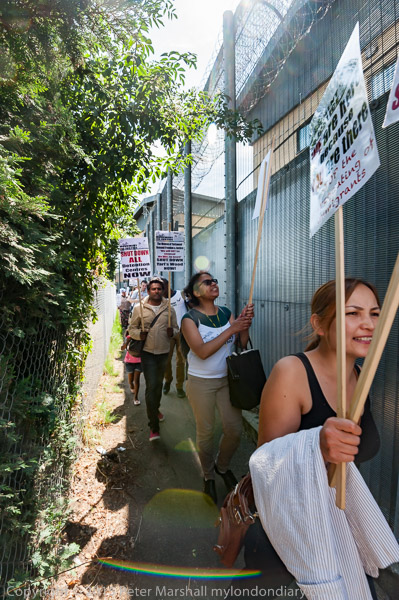
Security had been stepped up greatly at the Heathrow centre since some previous protests and police and security staff confined the protesters to an area in front of the administration block, well away from where detainees are held. But the protest made a lot of noise, shouting and dancing with megaphones and a small public address system, and phone calls with the detainees confirmed they could be clearly heard inside.
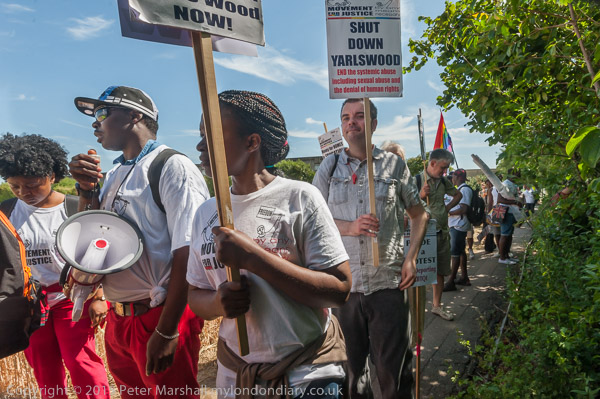
Detainees are not held under the same conditions as prisoners in jail, though the Colnbrook centre is built and largely run on prison lines. But while trying to argue their cases the detainees need mobile phones to try to contact their legal advisers and MFJ were able to contact some of them and amplify their messages to the protest.
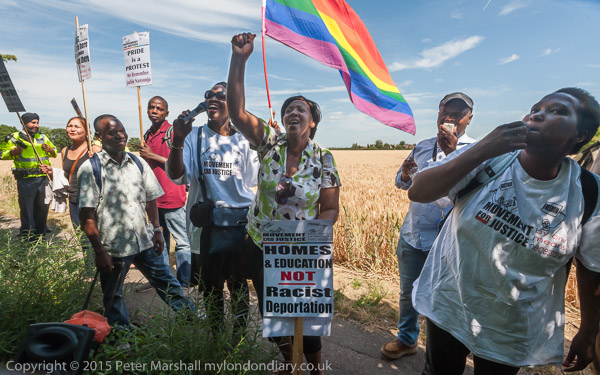
After a lengthy protest in front of the Harmondsworth administration building the protesters moved off and walked down a public footpath that runs beside the 20ft fence on the east of the Colnbrook blocks. Here they were much closer to the people inside but the tall fence, a hedge and some trees prevented us from seeing them at the windows. But again they could be contacted by phone and told those outside about the poor conditions and treatment they were experiencing and gave profuse thanks to the people outside who had come to visit them.
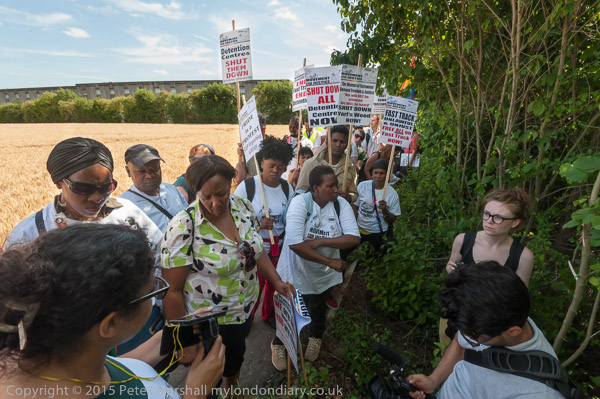
Finally the protesters decided it was time to begin their hour and a half journey back into central London and I said goodbye to start my shorter journey home.
More on My London Diary: Surround Harmondsworth.